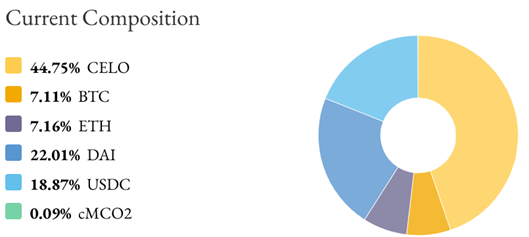The Lifeblood of DeFi: Algorithmic Stablecoins
In this 4th blog in the stablecoin series, we’ll explore algorithmic stablecoins by analyzing a couple specific examples. The possibilities for algorithmic stablecoins are endless since they do not require holding traditional, off-chain assets in reserves that back the stablecoin. This is in direct contrast to popular asset-backed stablecoins that purchase and custody cash, treasury bonds, corporate bonds, precious metals, etc. as stablecoin reserves.

Algorithmic Stablecoins: How They Work
Algorithmic stablecoins are typically backed by on-chain digital assets using a software-defined algorithm that maintains a reserve ratio between the stablecoin and its reserve assets. This type of stablecoin can be advantageous for DeFi application since the issuance and reserves are automatically managed 24 hours a day without human intermediaries. The decentralized, software-based management of algorithmic stablecoins is truly unique.
Interesting examples are the Celo stablecoins which include the Celo Dollar (cUSD), Celo Euro (cEUR) and the Celo Brazilian Real (cREAL). Each stablecoin maintains its peg to the associated fiat currency using automated management of circulating coin supply. The underlying protocol, Celo Protocol in this example, responds to fluctuations in the coin price by automatically:
a) Creating new stablecoins (cUSD/cEUR/cREAL) to increase coin supply if the coin price rises above 1.00. According to economic theory, an increase in supply will shift supply curve left and result in a lower coin price; or
b) Purchasing existing coins on the open market to reduce circulating supply if the coin price falls below the desired price peg of 1.00. According to economic theory, a decrease in supply will shift the supply curve right and result in a lower coin price.
This software-defined approach of automatically pegging a stablecoin’s price to 1.00 dollars/euros/etc. is known as an algorithmic stablecoin.
Algorithmic Stablecoins: How They Work
Algorithmic stablecoins are typically backed by on-chain digital assets using a software-defined algorithm that maintains a reserve ratio between the stablecoin and its reserve assets. This type of stablecoin can be advantageous for DeFi application since the issuance and reserves are automatically managed 24 hours a day without human intermediaries. The decentralized, software-based management of algorithmic stablecoins is truly unique.
Interesting examples are the Celo stablecoins which include the Celo Dollar (cUSD), Celo Euro (cEUR) and the Celo Brazilian Real (cREAL). Each stablecoin maintains its peg to the associated fiat currency using automated management of circulating coin supply. The underlying protocol, Celo Protocol in this example, responds to fluctuations in the coin price by automatically:
a) Creating new stablecoins (cUSD/cEUR/cREAL) to increase coin supply if the coin price rises above 1.00. According to economic theory, an increase in supply will shift supply curve left and result in a lower coin price; or
b) Purchasing existing coins on the open market to reduce circulating supply if the coin price falls below the desired price peg of 1.00. According to economic theory, a decrease in supply will shift the supply curve right and result in a lower coin price.
This software-defined approach of automatically pegging a stablecoin’s price to 1.00 dollars/euros/etc. is known as an algorithmic stablecoin.
Algorithmic Stablecoins: How They Work
Algorithmic stablecoins are typically backed by on-chain digital assets using a software-defined algorithm that maintains a reserve ratio between the stablecoin and its reserve assets. This type of stablecoin can be advantageous for DeFi application since the issuance and reserves are automatically managed 24 hours a day without human intermediaries. The decentralized, software-based management of algorithmic stablecoins is truly unique.
Interesting examples are the Celo stablecoins which include the Celo Dollar (cUSD), Celo Euro (cEUR) and the Celo Brazilian Real (cREAL). Each stablecoin maintains its peg to the associated fiat currency using automated management of circulating coin supply. The underlying protocol, Celo Protocol in this example, responds to fluctuations in the coin price by automatically:
a) Creating new stablecoins (cUSD/cEUR/cREAL) to increase coin supply if the coin price rises above 1.00. According to economic theory, an increase in supply will shift supply curve left and result in a lower coin price; or
b) Purchasing existing coins on the open market to reduce circulating supply if the coin price falls below the desired price peg of 1.00. According to economic theory, a decrease in supply will shift the supply curve right and result in a lower coin price.
This software-defined approach of automatically pegging a stablecoin’s price to 1.00 dollars/euros/etc. is known as an algorithmic stablecoin.
To back the outstanding coin supply, Celo holds roughly $120.8 million in reserves, spread across five cryptocurrencies, including two other stablecoins. Resulting in a reserve ratio of 2.62, each Celo stablecoin in circulation is guaranteed by assets valued at 2.62 times the amount of the stablecoin itself. However, a closer look at the mix of assets shown in the figure below paints a slightly different picture.

Nearly 45% of Celo’s reserves are composed of the CELO coin, which provides Celo Protocol governance rights and is issued on the Celo blockchain. The Celo Protocol is the software that executes the algorithm responsible for maintaining Celo’s stablecoin peg. So, the financial relationship between CELO coin and cUSD/cEUR/cREAL stablecoins is similar to the previous relationship between LUNA and UST with one exception: Celo algorithmically manages the supply of its stablecoins directly, rather than the supply of the reserve asset.
Issuing a coin, and also holding it as a reserve asset, creates a self-guaranteeing system–making the stablecoin’s price peg partially dependent upon the coin holders’ qualitative confidence levels, rather than high-quality collateral. However, BTC, ETH, DAI and USDC compose the majority of reserve assets.
Collectively, the non-CELO assets were worth about $66.49 million on June 1, 2023 and, taken alone, they would represent a reserve ratio of ~1.44, which is still overcollateralized and impressive compared to other stablecoins.
Aside from Celo’s mobile friendly approach that makes its stablecoins easily accessible to unbanked populations, it powers the same DeFi use cases as Ethereum and other types of stablecoins. Those DeFi use cases include sending and receiving money across borders with low fees and lightning fast speeds, collateralized borrowing of funds, interest earning via staking, participation in private loan funding, etc. The main difference between algorithmic and other stablecoins are the type of reserve assets and the method of reserve management.
In conclusion, analysis of both reserve assets and reserve management of stablecoins is critical when assessing their risks, reliability and staying power.